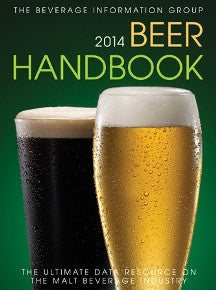Need More Help?
Need more help?
Stop by the library, email the reference librarians, or call us at 255-3673.
More Hospitality Industry Guides
Books
The following books are recommended by librarians at the Nestlé Library. Many of the books are located in the ILR Library so click the catalog record link for location information (including call numbers).
-
Beverage Basics by
Call Number: ILR Library TP505 .S63 2011Publication Date: 2011An all-inclusive guide to wine, beer, and spirits As people develop more sophisticated tastes, a basic understanding of wine, beer, and distilled spirits is more important than ever for chefs, servers, bartenders, and restaurant managers. For professionals and amateurs alike, Beverage Basics provides a thorough and accessible education in the fundamentals. Beverage Basics covers the art and science of winemaking from the vineyard to the table, takes a comprehensive look at the production methods, styles, and ideal food pairings for beer and spirits, and even covers the often-overlooked issues of health and the law. -
The Wine, Beer, and Spirits Handbook by
Call Number: ILR Library TP548 .L37 2010Publication Date: 2009The Wine, Beer, and Spirits Handbook demystifies the wine and wine-making process, examining not only the making and flavor profiles of wine, beer, and spirits, but also the business of wine service as practiced by a chef or sommelier. Unique to this book, is the strong emphasis on food and wine pairings, as well as food and beverage interactions. More importantly, The Handbook explains the responsibilities of a sommelier from both service and managerial perspectives. -
 Who's Buying Alcoholic and Nonalcoholic Beverages
by
Call Number: ILR LibraryPublication Date: 2013Latest edition available in Nestle Library (Statler Hall.) Please see a librarian for access.
Who's Buying Alcoholic and Nonalcoholic Beverages
by
Call Number: ILR LibraryPublication Date: 2013Latest edition available in Nestle Library (Statler Hall.) Please see a librarian for access. -
Tasting Beer by
Call Number: ILR Library TP577 .M68 2009Publication Date: 2009Guiding readers to a better understanding of how every batch of beer is affected by recipe formulation, brewhouse procedures, yeasts, fermentations, carbonation, filtration, packaging, and much more. Readers will learn to identify the scents, colors, flavors, and mouth-feel of all the major beer styles. There are also chapters on proper serving and storage conditions, and classic beer and food pairings. For each style, Mosher includes historical and regional facts, taste and aroma characteristics, seasonal availability, food pairings, and a few terrific recommendations for readers to sample. -
The Brewers Association's Guide to Starting Your Own Brewery by
Call Number: ILR Library HD9397.U52 B74 2013Publication Date: 2013Reviews everything that matters, from site selection and branding to regulatory requirements, flooring choices and equipment considerations. Adeptly covers ingredients, financing, business plans, quality assurance, distribution, wastewater, sustainability practices and more, for prospective brewpub and packaging brewery owners alike. -
 Beer Handbook
by
Call Number: ILR Library HD9397.U5 J62Publication Date: 2013Latest edition on reserve in Nestle Library.
Beer Handbook
by
Call Number: ILR Library HD9397.U5 J62Publication Date: 2013Latest edition on reserve in Nestle Library. -
Handbook of Brewing by
Call Number: Geneva Library TP570 .H23 2006Publication Date: 2006Provides the essential information for those who are involved or interested in the brewing industry. It recounts how the industry has transformed both commercially and technically and how many companies have been subsumed into large multinationals while at the other extreme, microbreweries have flourished in many parts of the world. It also explains how massive improvements in computer power and automation have modernized the brewhouse while developments in biotechnology have steadily improved brewing efficiency, beer quality, and shelf life. It includes the many factors to be considered in setting up and operating a microbrewery. -
The U. S. Brewing Industry by
Call Number: ILR Library HD9397.U52 T73 2005Publication Date: 2004This definitive study uses theory, history, and data to analyze the evolution of the US brewing industry from a fragmented market to an emerging oligopoly. Drawing on a rich and extensive data set and applying the theoretical tools of industrial organization, game theory, and management strategy, the authors provide new quantitative and qualitative perspectives on an industry they characterize as "a veritable market laboratory. This 25-year study of the brewing industry, will be a valuable resource for industry analysts, economists, and students of industrial organization.